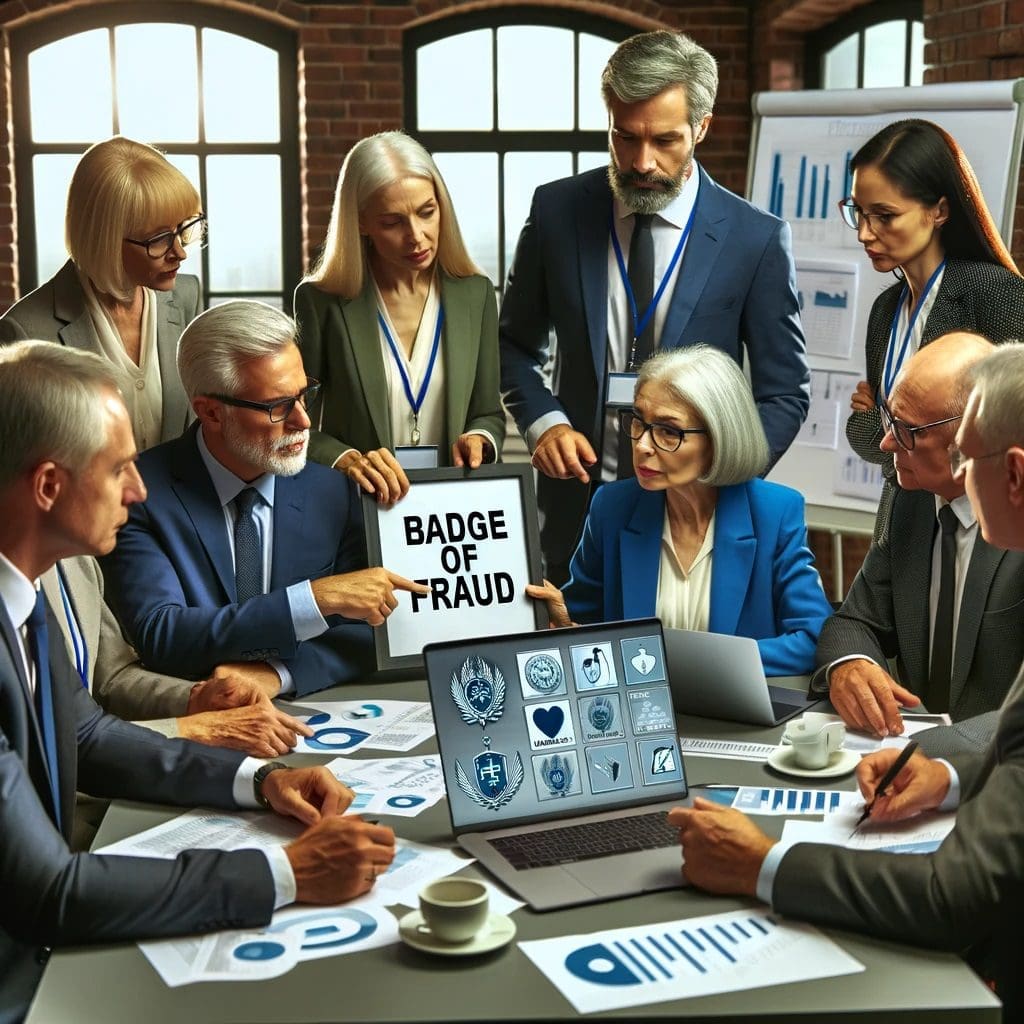How to Recognize Signs of Fraudulent Asset Transfers
The concept of the Badge of Fraud is a cornerstone in legal and financial investigations, providing crucial indicators for identifying fraudulent activities. This article delves into the multifaceted aspects of the Badge of Fraud, exploring its legal background, applications in different contexts, and its critical role in uncovering deceptive financial practices.
Understanding the Badge of Fraud
The Badge of Fraud encompasses a set of indicators that point towards fraudulent intent in financial transactions. These indicators, or “badges,” assist courts, regulatory bodies, and financial investigators in inferring the presence of fraud, particularly in scenarios where direct evidence is not readily available. These badges include signs such as understatement of income, accounting irregularities, inadequate records, obstructive actions by individuals, and more.
Legal Background and Applications
Originating in common law, the concept of the Badge of Fraud has evolved into a fundamental tool in both civil and criminal law contexts. It plays a pivotal role in cases involving fraudulent transfers, tax evasion, and other financial misconduct. Understanding these indicators is crucial for legal professionals, accountants, and financial investigators in their pursuit of uncovering and prosecuting financial fraud.
Case Studies and Real-World Scenarios
Exploring case studies where the Badge of Fraud has been pivotal can offer practical insights into its application. For example, in tax evasion cases, certain patterns such as failing to report substantial income or the destruction of financial records have been key indicators leading to legal actions. In the realm of bankruptcy and asset transfers, badges like transferring assets to insiders or retaining control over assets post-transfer have been significant in proving fraudulent intent.
Comparative Analysis with Other Legal Theories
When compared with other legal theories and tools used in financial investigations, the Badge of Fraud stands out for its practical applicability. Unlike abstract legal theories, it provides concrete, observable indicators that can be actively searched for in financial records and transactions.
The Role of the Badge of Fraud in Modern Legal Education
In modern legal education, the Badge of Fraud is taught as a crucial element in understanding financial law and forensic accounting. It equips future lawyers and financial experts with the knowledge to identify and combat financial fraud effectively.
Implications for Legal Strategy and Policy
The Badge of Fraud not only aids in the detection of fraudulent activities but also shapes legal strategy and policy. By understanding these indicators, policymakers can develop more effective regulations to prevent financial misconduct, and legal professionals can devise strategies to protect their clients from fraudulent activities.
Historical Evolution of the Badge of Fraud
The concept of the Badge of Fraud has its roots in common law, evolving over centuries as a key tool in identifying and prosecuting financial fraud. Historically, these badges were used in courts to infer fraudulent intent in the absence of direct evidence. This methodology was particularly crucial in a time when financial record-keeping was less sophisticated and documentation could be easily manipulated or destroyed. As financial systems and legal frameworks have evolved, so too has the application of the Badge of Fraud, adapting to modern financial practices and technologies.
Impact on Various Sectors
The Badge of Fraud has a significant impact across various sectors, including banking, real estate, corporate finance, and taxation. In the banking sector, it aids in identifying fraudulent activities like money laundering and loan fraud. In real estate, it helps uncover property fraud and illegal asset transfers. Corporations use these indicators to prevent and detect internal fraud, while tax authorities like the IRS employ these badges to identify tax evasion and related offenses. The concept’s versatility makes it an invaluable tool across diverse financial and legal landscapes.
Detailed Strategies for Application in Legal Scenarios
In legal scenarios, the application of the Badge of Fraud requires a strategic and thorough approach:
- Comprehensive Analysis: Legal professionals must conduct a detailed analysis of financial records, looking for indicators like unexplained asset transfers, discrepancies in financial statements, and unusual transactions.
- Contextual Evaluation: Understanding the context in which financial transactions occur is crucial. This includes assessing the timing of transactions, relationships between parties involved, and the overall financial situation of the entities or individuals in question.
- Technology Utilization: Modern technologies, including data analytics and forensic accounting tools, are essential in uncovering subtle and complex fraudulent schemes.
- Collaboration with Experts: Collaboration with financial experts, forensic accountants, and tax professionals is often necessary to interpret financial data accurately and identify potential badges of fraud.
Growing Importance in an Increasingly Complex Financial World
In today’s globalized and technologically advanced financial world, the importance of understanding and applying the Badge of Fraud has grown exponentially. The rise of digital transactions, complex corporate structures, and cross-border financial activities has made the detection of fraud more challenging. The Badge of Fraud remains a cornerstone in combating these challenges, providing a framework for identifying fraudulent activities amidst the complexities of modern finance.
Conclusion
The Badge of Fraud stands as a testament to the legal system’s adaptability and resilience in the face of evolving financial practices. Its historical roots, widespread impact across sectors, and adaptability to modern challenges underline its enduring importance in the fight against financial fraud.
- Unveiling the Badge of Fraud: Key Indicators in Legal Practice – Attorneys.Media
- What Legal Actions Can Be Taken Against Financial Fraud? – Attorneys.Media
- Are Common Activities Considered “Badges of Fraud?” – Weisberg Kainen Mark
- Badge Of Fraud: Understanding Legal Implications – US Legal Forms
- What are The Badges of Fraud? Fraudulent Intent Explained – Freeman Law
- IRS: Common Badges of Tax Fraud – Tax Litigator
- The “Badges of Fraud” – Disinherited




















